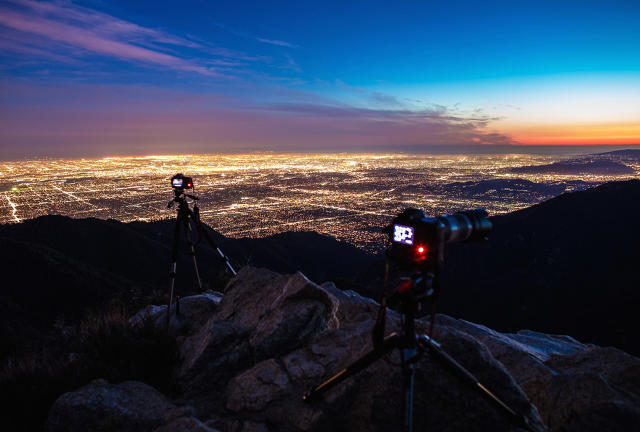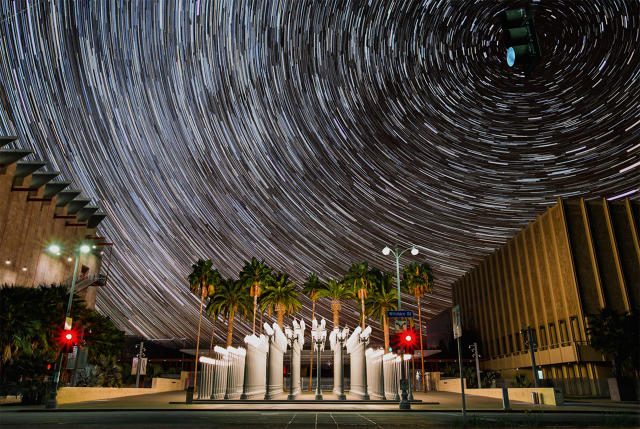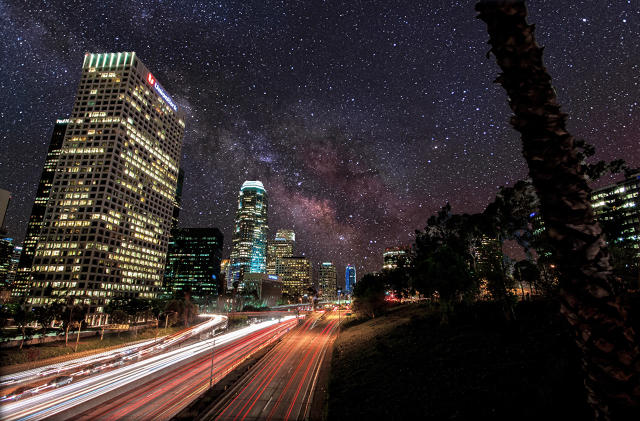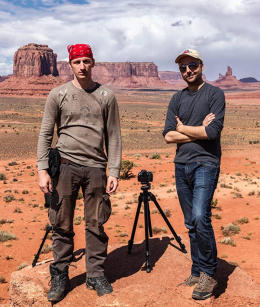When the Northridge earthquake knocked out most power lines in Los Angeles in 1994, the local observatory started getting phone calls: What was the “strange sky” they had seen that night? With the lights out, people were seeing stars like the Milky Way for the first time—and as city dwellers, the sight was unrecognizable.
A new photography project is based on the same premise: If you live in a city and you’re not a camper, you might never have seen what the night sky actually looks like, thanks to light pollution. For their new book, which they are now crowdfunding for on Kickstarter, two photographers plan to travel both to some of the darkest places in the country—with the most spectacular night skies—and to document light pollution in and near cities.

“We’re trying to bring this to people who have never seen it, to just sort of jar at their imagination, get them inspired to at least go out and look,” says Harun Mehmedinovic, who is collaborating with Gavin Heffernan on the new book.
The pair met while studying at the American Film Institute in L.A., and started working on timelapse photos in nearby parks as a way to escape the city. “When we got out of the city and under the stars, that’s when we realized what we were missing in the first place,” says Heffernan. “It’s so easy to take for granted, or just say that the night sky is a pretty thing you can live without, but we started to talk about it and realized the connection is more profound than just beauty.”
As more people live in cities, an estimated 80% of the world population has never seen the Milky Way. While around 2,500 stars might be visible in a rural area on an average night, only 200 or 300 can be seen in a suburb, and fewer than a dozen in a city.

In the book, the photographers plan to focus on the beauty of the sky. “We want to get people inspired before we try to educate people, because we find that’s the best way to do it, rather than the other way around,” says Heffernan. “Our hope is by capturing the northern lights, and going to Yosemite and a lot of these incredible locations, we can sort of get the inspiration going, show these incredible things that are still out there, and then start to slowly put the message in about what we can do to fix it.”
They may also create composite photos, as they have in the past, that show what the sky would look like in L.A. or Vegas without city lights. “Sometimes it’s just that one image that really gets people’s minds going—seeing the milky way on top of the Hollywood sign,” Heffernan says. “Suddenly it just kind of speaks to the issue in a way that 10 pages of text can’t do as effectively.”

While light pollution obscures the stars, it also leads to other problems, from disrupting the path of migrating birds to making it harder for humans to sleep. Researchers have also linked bright city lights to disease.
The problem actually isn’t that difficult to fix through better design; many lights, for example, point up at night, wasting power while they light up the sky unnecessarily. “Many of the changes that are necessary are not huge—they don’t require changing your whole life or spending twice as much money, or anything like that,” says Heffernan.
The artists hope that the project helps lead to more support for programs like one in Phoenix, Arizona, which is aiming to become the first major dark sky city in the U.S.

“It’s interesting because it’s an issue that bridges divided people,” says Mehmedinovic. “People in Arizona might be on both sides of the fence with something like global warming, but they’re on the same side with the stars. It’s undeniable what’s happening with light pollution. I think the majority of the world will be our allies on this, but they maybe haven’t thought about it or digested it yet. That’s kind of what this project is about.”
Light pollution can also serve as a metaphor for other environmental challenges. “There are many problems out there, and a lot of them seem to be more pressing—water running out, or climate change, or all these other issues,” says Heffernan. “But our feeling is that the light pollution issue is indicative of the greater problem. It’s really about the issue of ecological integrity, and the personal price we have to pay for the technology that we experience every day. We really believe that it’s an iconic issue.”